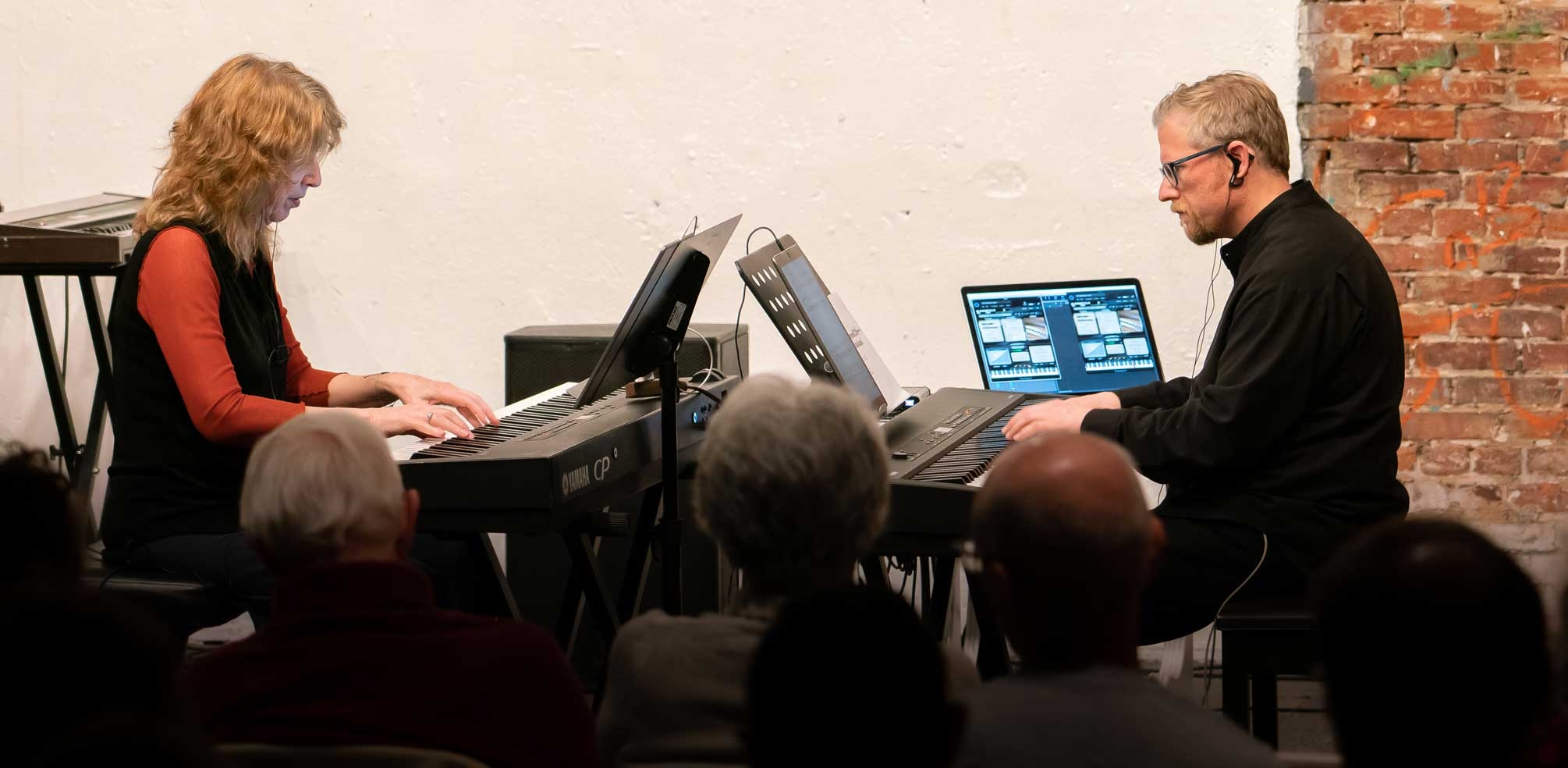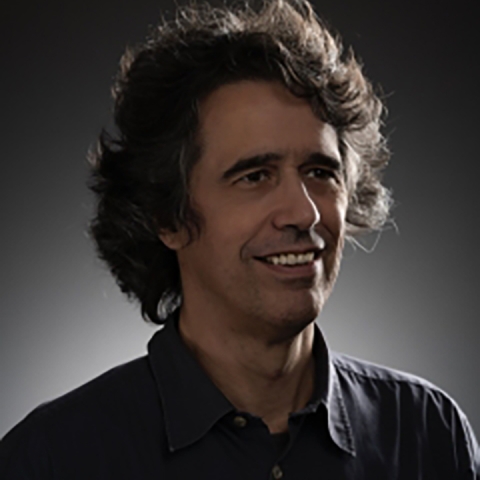
How many pianos does it take to perform “Titanium,” a 2014 piece for two pianists by João Pedro Oliveira, Corwin Chair of Composition at UC Santa Barbara?
“One” and “two” are both reasonable guesses, but the actual answer is three: One grand piano, plus two toy pianos. You also need a guitar pick, a credit card (or, better, a small metal case), a sound system to produce an electronic “backing track” and two performers, both virtuosic and audacious.
Oliveira has them in Vicki Ray and Aron Kallay, Los Angeles-based pianists renowned for their performances of new music who will perform a free recital of four compositions, including Oliveira’s “Titanium,” at 7:30 p.m. Tuesday, Nov. 21 in Lotte Lehmann Concert Hall on campus.
“We’re speaking the language of our time,” said Ray. The avant-garde music they play, she argued, is “fun for us, and for the audience. It’s also really beautiful. Mozart is, too, but Mozart didn’t have electronics!”
She added that a musical performance should be “a beguiling conversation, not an off-putting one. I don’t want to alienate the audience. I want to invite them in.”
Ray and Kallay have been playing together for the past decade or so; neither of the aggressively forward-looking musicians is really sure. Their recital is a rare opportunity to hear what two of Southern California’s most adventurous artists are up to without driving to L.A.
“UCSB is proud to invite Vicki and Aron for the Corwin Concert Series at the Music Department,” said Oliveira, who recently received a Guggenheim fellowship in music composition. “Having such highly-skilled pianists performing contemporary compositions at UCSB is a unique opportunity for students and faculty to hear them play live a very interesting and varied program.”
That program consists of four substantial contemporary works: “Still Life with Piano” by Frances White, performed by Kallay; “Blue Sky Catastrophe” by Martin Herman and Seth Shafer, performed by Ray; “Fit” by Sean Friar, performed by the duo; and “Titanium.”
“‘Titanium’ belongs to a group of four works that are inspired by elements of nature,” Oliveira explains in his program note. “Titanium is a bright metal with low density and high strength and ductility. It is also corrosion resistant and has high temperature resistance. Its name is inspired by the Titans of Greek mythology.”
So does that mean the music is heroic? “Well, it’s heroic to play it,” Ray said with a laugh.
“Aron and I are seated together at a grand piano. On each side of us is a toy piano. There’s a beautiful electronic backing track Joao created that we’re synced with. The way the pianos weave in and out of the electronics is really masterful. The electronics are sometimes the catalyst for our sound — or vice-versa. It’s very colorful and dynamic.
“Besides playing the piano normally, and also playing the toy pianos, we also pluck the strings (of the big piano) and make rattling sounds on the piano keys. Playing it requires advanced choreography.”

Still having a hard time picturing this? Here’s Kallay’s description.
“There’s a toy piano to my left that I sometimes play with my left hand while I’m playing the regular piano with my right hand,” he said. “Also, sometimes I have to reach into the piano to mute of the strings with one hand and play the key that corresponds to that string. That creates sort of an underwater sound.
“There’s also a pick, like a guitar pick, that I use to sometimes pluck the strings inside the piano. Sometimes I scrape lengthwise on the strings, which makes sort of a zing sound. We also use two halves of a reading-glasses case, which we sometimes draw along the keys. It makes a sound like a card slapping against bicycle spokes. The music has a metallic hardness around the edges that I really like.”
“Blue Sky Catastrophe” is no less innovative — or less tricky to execute.
“Seth Shafer will be in residence at UC Santa Barbara, so I wanted to play this piece he wrote for me with Martin Herman four years ago,” Ray said. “It’s kind of extraordinary.
“Seth and Martin created this software program where the music is streamed to me live. I start playing it, and the computer analyzes how well I’m sight-reading it. Based on that information, it adjusts what it gives me next, spitting out new music for me to sight read. It’s a wild ride! The piece is slightly different every time. It’s exciting, and terrifying.”
Ray and Kallay have been specializing in exciting, terrifying music for their entire careers. Among her many accomplishments is giving the world premiere of John Adams’ piano piece “Road Movies” at the Kennedy Center in Washington, D.C. in 1994. (Afterwards, she told the esteemed composer that she thought one section was redundant and could be cut; he ultimately agreed, and excised it from the final version.)
Ray, who is originally from Montana, reports she “got bitten by the new-music bug when I was pursuing my master’s degree at Arizona State. I never wanted to be a traditional soloist. All my friends were composers. I was passionate about bringing new works to life. It kind of unfolded from there. People started identifying me as a new-music pianist, so that’s what they would ask me to play. I just went with it! I feel new music picked me, and I’m very happy it did.”
Ray moved to Los Angeles to pursue a doctorate in music at the University of Southern California. So did Kallay, some years later. The Pittsburgh native also gravitated towards new music in college, first at Carnegie Mellon and then the University of Michigan. “I knew it spoke to me,” he said. “I also knew I was good at it.”
So what keeps them performing together after more than a decade? “The main issue for any duo is that you like each other and get along,” Kallay said. “You’re going to spend a lot of time with that person! As soon as we met, we knew we’d be good friends. We have a good time playing together. We both have a sense of rhythmic accuracy, being true to the music, and wanting to put together the best product possible.”
You might say their bond is as strong as titanium.
Shelly Leachman
Editorial Director
(805) 893-2191
sleachman@ucsb.edu




